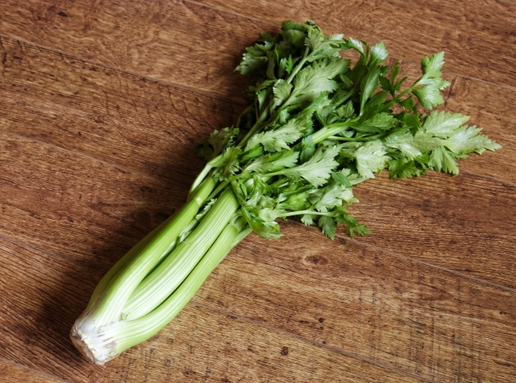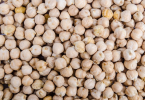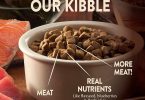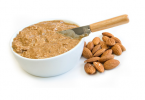Today’s question: can dogs eat celery? Is celery good or bad for dogs? Scroll down for detailed answers.
Whether you are a dog owner or not, you probably already know that when it comes to the food s/he eats, our canine friend loves meat and bones. But while cats are obligate carnivores and require meat protein in order to thrive, dogs have a little more wiggle room when it comes to their diet. Like humans, they tend to be omnivores and have a wider range of food products they can safely consume and assimilate. Did you know dogs can actually eat a lot of different vegetables? It’s true! Not only do they like to eat veggies, but the veggies are actually very beneficial to your dog’s health. What vegetables can dogs eat? Can dogs eat celery? The short answer is yes. Let’s find out the details!
Can Dogs Eat Celery?
Fortunately, celery is among the veggies that are not only okay for dogs but are actually recommended. Just cut the leaves off the celery and feed it to your furry friend. They can eat raw or cooked celery. Raw celery is hard, but able to chew easily by a dog if in a bite sized piece. Unlike a potato, raw celery should not be as risky if eaten as-is. The only thing you have to worry about with celery is not to give it to your dog as a whole long stem, they will have trouble eating and digesting it. It’s safer to cut the stalk into small pieces. Always wash the celery to ensure any harmful bacteria or pesticides are not hidden on the veggie. In addition, you will have to be careful not to give your pet too much celery, because you may find that the pooch urinates a lot more.
If your dog has eaten an entire stalk of celery without your permission, do not worry. The celery is not toxic and does not contain any real choking hazards such as pits or pulp. As long as your dog has chewed the celery, s/he should be fine. Your dog may have to urinate a lot after eating the celery stalk, but this is because of the high water content in celery more than anything else. If you have any concerns, call your vet, but simply keeping an eye on your pup should be enough.
How To Introduce Veggies To Your Pup’s Diet
As mentioned earlier, dogs are free to consume many vegetables and fruits in addition to their diet of kibble and moist food. Typically, the dog food you can buy at the store will already have a content of vegetables in the kibble but you can absolutely supplement that with veggie treats of your own. While the dog food you buy at a store states that the kibble is derived of veggie sources, only a small amount of veggies are used and those that are used are simply fillers. Just as humans need to eat whole foods to benefit from their vitamins and nutrients, the same holds true for dogs. Whole veggies are better to offer dogs that processed veggies used as a dog food filler.
Many humans do not eat the amount of veggies they should on a daily basis, and will never think to offer veggies to their dogs. Dogs are known to be simple dog food eaters or simple meat eaters left to their own devices. Surprisingly, there are actually plenty of vegetables that dogs may eat, including asparagus, cucumbers, carrots, peas, green beans and others. When choosing a veggie to offer your dog, be sure to do your research on which veggies are safe for your dog’s size and breed. Asking a vet for their personal preference may be a good choice if you have any doubts.
When feeding your dog celery, you have the peace of mind in knowing that the food is not only a whole food, but also one free from seeds, pits, shells, and casings that could pose dangerous threats to your pet. The stalk of the celery is relatively smooth and easy to chew and swallow. The celery is also a bit crunchy, which some dogs seem to enjoy. Just as a dog biscuit is crunchy, so is celery. An added bonus of celery is that the stems clean teeth and can remove debris.
It is recommended that whenever you want to introduce something new to your pet’s diet, you should start out by only offering a small piece at first. This goes for any kind of vegetable. Giving your dog a small piece of celery will ensure your dog actually takes a bite and seems to like the treat. You may also see from offering only a small serving how your dog chews the food. If your dog fully chews the celery offered, you can trust him/her to chew the bites and not choke. Always offer bite sized pieces to reduce the choking isk. After eating the new food, watch your dog to be sure there are not any reactions or side effects your dog may be suffering from. If everything is okay and your pooch seems to like it, you can continue to give it small pieces from time to time.
Of course, there are also veggies that are not as healthy for canine’s consumption. Among these are onions, tomatoes, avocado and potatoes. Onions have the very adverse effect of breaking down your dog’s red blood cells, which affects how much oxygen his body gets. It’s the same way with garlic, which is why it is to be avoided. Foods seasoned with garlic and onion also needs to be avoided. Even if your dog is not eating an entire onion or a clove of garlic, a small amount of simple seasoning may also harm your pet’s health. Tomatoes are approved to serve your dog, but in very small quantities. The same goes with potatoes. However, these are alright to consume if they are cooked. Tomatoes must have the seeds removed, and potatoes need to be softened to reduce the risk of choking and bowel obstruction. Avocado is also toxic in a large enough quantity, in addition to the fact that it can block the animal’s intestines.
When considering whether to offer your dog veggies, and which are the safest to offer, be sure to contact your vet before serving. Also be sure to watch your pet for their personal preferences and any adverse reactions before moving forward. Some veggies, like celery, are generally well taken by your pet, but be sure to take into account the likes and dislikes of your particular pet when offering celery.
What Are the Benefits of Celery?
Eating celery is an excellent way for your dog to ensure its proper intake of vitamins and nutrients. Celery stems are rich in vitamins C, B1, B2 and B6, as well as potassium, calcium, magnesium, sodium, iron, folic acid, amino acids, phosphorus and others. It’s a veritable cocktail of health and it can do nothing but good things for your pet, if it is consumed in the appropriate quantities. Here are many other benefits:
Nutrients in celery fiber are released aiding bowel movements.
Celery consists of pthalides which helps with heart related problems and aids to lower blood pressure.
The pthalides also lower cholesterol by increasing bile acid secretion.
The vitamin C in celery aids healthy immune system.
Juice from celery can assist dogs with joint pain or arthritis.
Celery increases the urine production which helps to flush out toxins from the body.
Celery doesn’t lose nutrients when cooked like many other foods do.
Celery juice can help dogs with arthritis or joint pain.
If your pet is suffering from any of these ailments, a celery treat from time to time can make a real difference in its health. In addition, it’s also good for freshening up your dog’s breath. It can also make a good treat if he is on a diet.
Low in calories.
As with any type of human food offered to your dog, be sure to only offer small amounts, and offer only on occasion. Dogs do not need celery to survive; the celery is more of added bonus to the diet. As healthy as celery is to humans, the same holds true for dogs. Without the toxins, the fat, calories, grease, and general junk that is the food of humans, celery stalk bites offer dogs a healthy alternative to eating people food.
Drawbacks of Celery
With all good foods, there may be some harm, As good of a food as celery is, do keep in mind that some say that celery should be avoided due to its stringiness. When biting into a piece of celery, you break apart the stalk and stringy types of pieces come up that you may have to bite a second time before chewing. It’s true that this textured part of celery can be a choking hazard, but as long as you cut it in small pieces, that should not be a problem.
For extra caution, you can juice the celery or string the celery before feeding it to your dog. Making the celery into a puree and serving with kibble may also please your dog as a treat and serve as a boost of nutrition.
You will also have to be mindful of the fact that your dog may crave celery and eat lots of it if he has access to it in your absence. Never leave the “special treat” food lying around for your pooch to find it because snacking on it too much can definitely harm him.
Conclusion
All in all, if you take all the necessary precautions, celery is fine and even recommended for canine consumption. Remember to always chop it into small pieces that are easy to chew, swallow and digest it. Also, don’t feed your pet too much of it. Moderation is the key. This way, the dog will be able to take all the healthy nutrients from it and have a natural and balanced diet. This will help your pet solve the health issues and keep him happy.
Related articles:
References:
http://www.dogster.com/lifestyle/
http://bunkblog.net/foods-safe-for-dogs/can-dogs-eat-celery
http://www.candogseat-this.com/can-dogs-eat-celery/









Leave a Comment